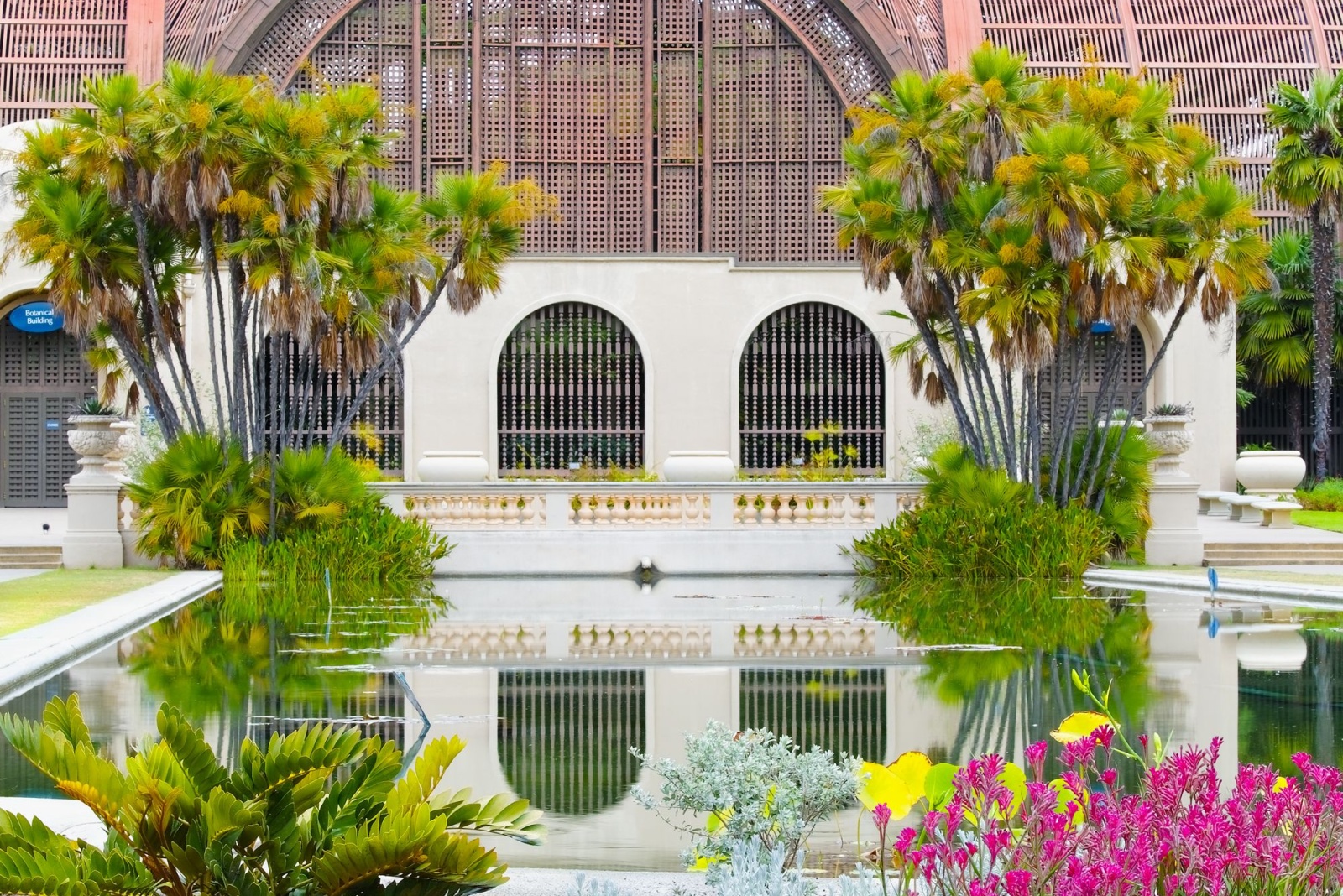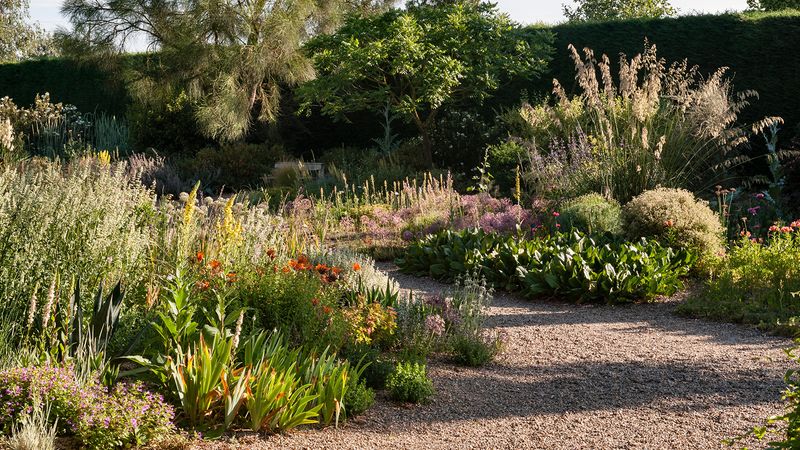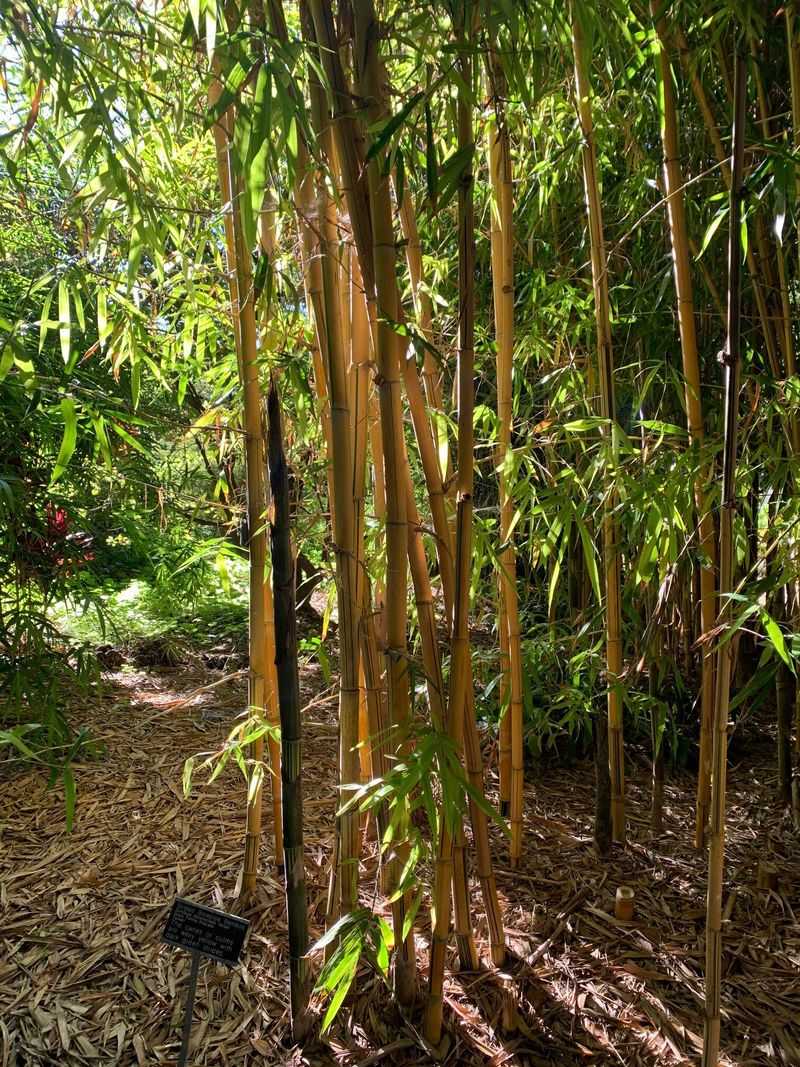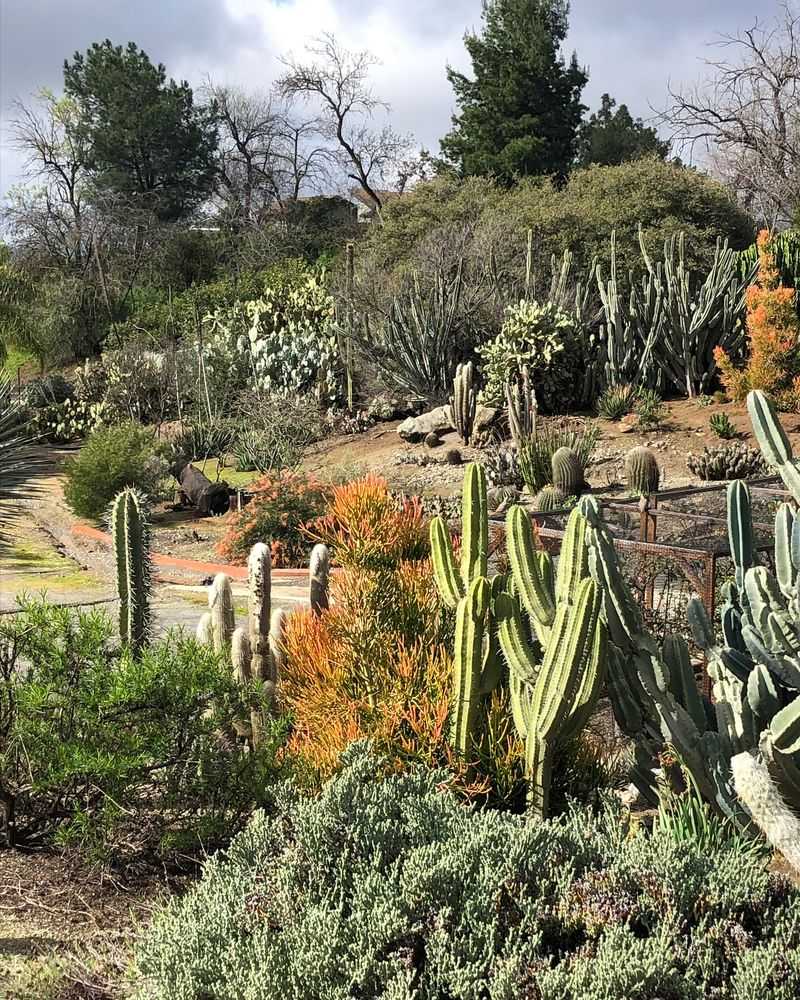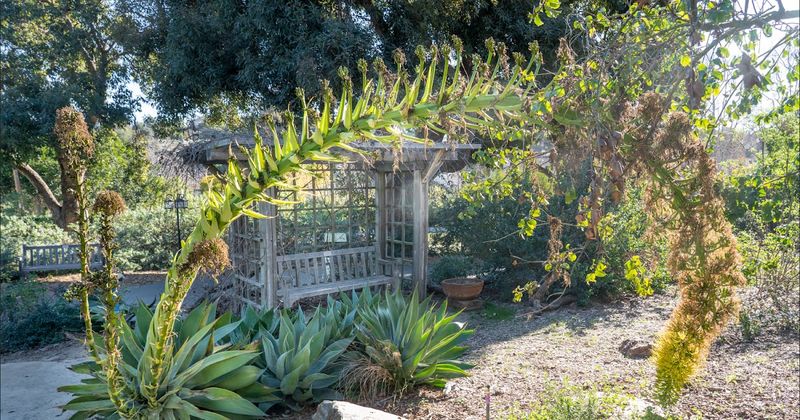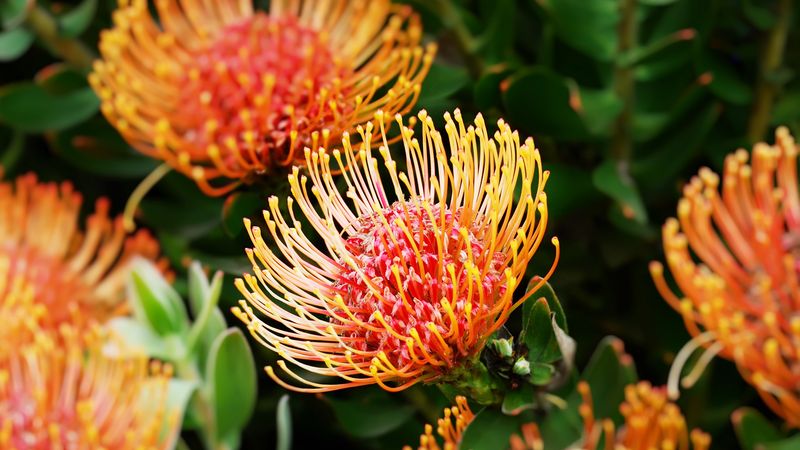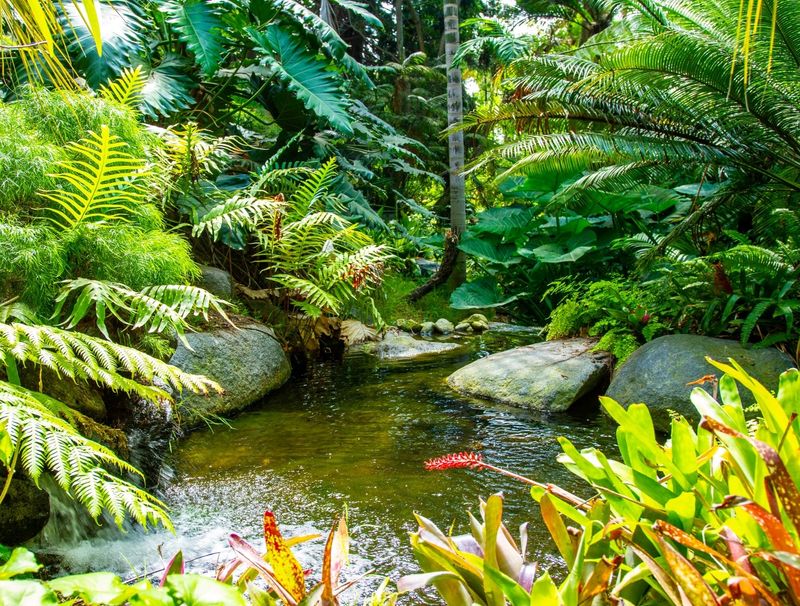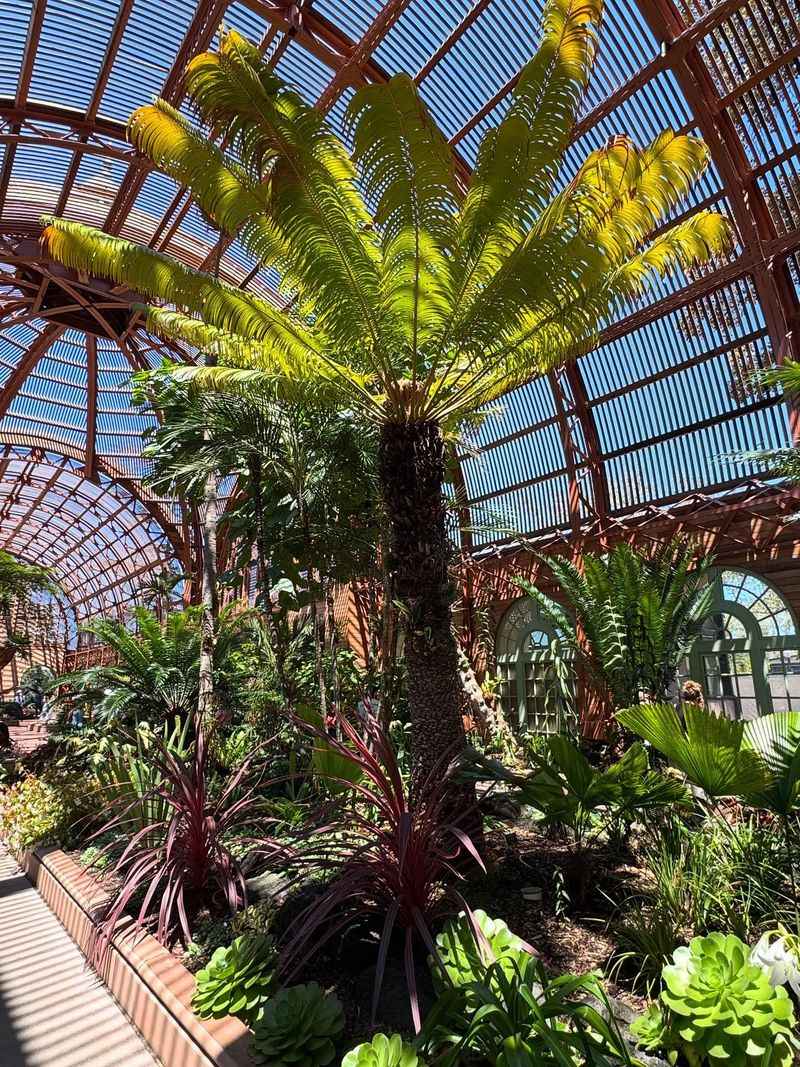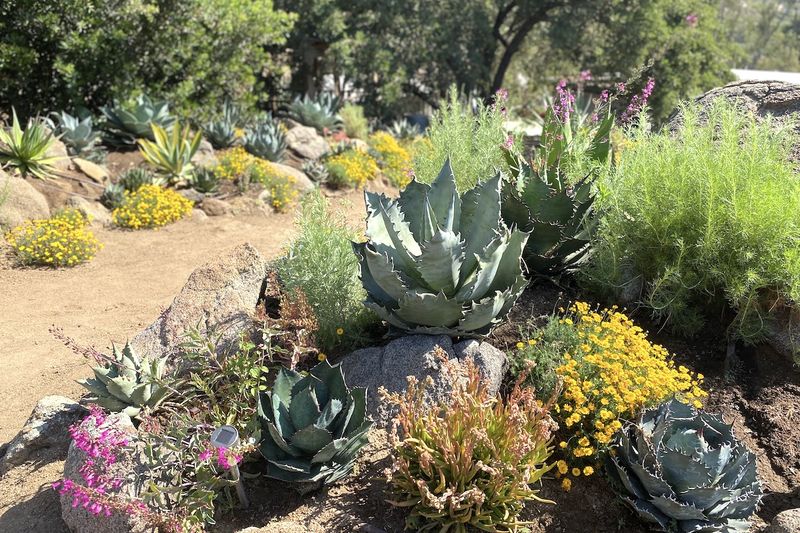Nestled in the coastal town of Encinitas, the San Diego Botanic Garden stretches across 37 acres of lush, varied terrain. It’s a place where global plant life thrives side by side, from towering palms to desert succulents. Every corner invites discovery and wonder.
This horticultural haven brings together ecosystems from tropical rainforests to dry, sunbaked deserts. The collections are thoughtfully curated, offering a rich tapestry of textures, scents, and colors. It’s like traveling the world—without leaving California.
Visitors step into a living museum where conservation meets education in the most vibrant way. Whether you’re a plant lover or a curious explorer, the garden offers a glimpse into Earth’s botanical diversity. It’s nature’s story, told beautifully.
1. Mediterranean Garden: Sun-Drenched Coastal Flora
Walking through this sun-bathed section feels like taking a tour around the Mediterranean Sea. Olive trees cast dappled shadows while lavender and rosemary release their distinctive fragrances with each passing breeze.
During my spring visit, I noticed how the garden designers cleverly arranged drought-resistant plants to mimic their natural growing patterns. The collection highlights species from five Mediterranean climate regions worldwide.
Stone pathways wind between cork oaks and Italian cypress trees, creating an authentic Mediterranean landscape that thrives naturally in Southern California’s similar climate conditions.
2. Bamboo Grove: Asia’s Towering Treasures
Stepping into this collection instantly transports you to the forests of East Asia. Tall culms create a natural cathedral ceiling, while the gentle clacking sounds of bamboo stems moving in the wind add a meditative quality to the experience.
The garden houses over 120 bamboo varieties from across Asia. Some specimens reach nearly 60 feet tall, forming cool, shaded corridors that provide welcome relief from California’s sunshine.
Educational placards explain bamboo’s remarkable growth patterns and cultural significance throughout Asian history, making this collection both beautiful and informative.
3. Desert Garden: Sculptural Succulents And Cacti
Rugged beauty defines this arid landscape collection featuring specimens from deserts worldwide. The garden showcases remarkable adaptations that allow plants to thrive in harsh environments with minimal water.
Barrel cacti, agaves, and rare euphorbias create living sculptures against a backdrop of carefully placed boulders. The collection demonstrates how desert plants have evolved similar survival strategies despite developing on different continents.
My favorite section features specimens from Baja California and the Sonoran Desert, highlighting the botanical connection between Southern California and its neighboring regions to the south.
4. Tropical Rainforest: Lush Canopy Dwellers
Hidden away in a sheltered corner of the garden lies this humid paradise of tropical treasures. Massive leaves create a multi-layered canopy while colorful bromeliads and orchids cling to tree trunks in a realistic recreation of rainforest ecology.
The collection includes specimens from Southeast Asia, Central America, and the Amazon Basin. Clever microclimates maintained by the garden staff allow these tropical species to flourish despite California’s drier climate.
Water features and careful placement near natural drainages help create the moisture levels these plants need, demonstrating the garden’s commitment to recreating authentic growing conditions.
5. Australian Garden: Down Under Diversity
Eucalyptus trees create a distinctive aromatic atmosphere in this collection dedicated to flora from the world’s smallest continent. The garden showcases Australia’s remarkable plant adaptations to fire, drought, and poor soils.
Proteas and banksias display their unusual flower structures while grass trees demonstrate the slow-growing majesty of Australia’s ancient landscape. Many plants here have evolved in isolation for millions of years.
The collection particularly impressed me with its range of eucalyptus species, from towering trees to compact shrubs, all displaying characteristic peeling bark and silver-blue foliage that has adapted so well to Southern California.
6. South African Garden: Fynbos And Veldt
Brilliantly adapted to periodic fires and seasonal drought, South Africa’s native plants create one of the garden’s most colorful collections. Aloes stand like sentinels among tufts of restios and other grass-like plants native to the Cape region.
The garden showcases species from the Cape Floristic Region, one of the world’s six floral kingdoms and the smallest yet most diverse. Many plants here have bulbs or underground storage structures that allow them to survive harsh conditions.
Spring visitors are rewarded with spectacular displays of bird-of-paradise flowers and proteas, demonstrating why South African plants have become popular in California landscaping.
7. Palm Canyon: Towering Tropical Giants
Nestled in a natural ravine, this collection creates a microclimate perfect for showcasing palms from around the world. The sheltered location provides protection from wind while capturing moisture that helps these tropical giants thrive.
Rare species mingle with more common varieties, demonstrating the incredible diversity within the palm family. Towering fan palms contrast with more delicate feather palms, showing evolutionary adaptations to different environments.
The garden’s oldest specimens date back to the 1970s and have grown to impressive heights, creating a cathedral-like atmosphere that transports visitors to tropical regions across the globe.
8. New Zealand Garden: Island Evolution Showcase
Ferns unfurl their fronds beneath the protective canopy of New Zealand’s iconic tree ferns in this unique collection. The garden highlights plants that evolved in isolation on these remote Pacific islands.
Silver-leafed plants like the distinctive Astelia create textural contrast against darker green foliage. Many plants here demonstrate convergent evolution, developing similar adaptations to those in other parts of the world despite genetic differences.
The collection includes several species of the unusual Cordyline, known as cabbage trees, whose distinctive silhouettes are emblematic of New Zealand’s landscape and have adapted surprisingly well to Southern California conditions.
9. Mexican Garden: Mesoamerican Marvels
Celebrating California’s botanical connection to its southern neighbor, this collection showcases Mexico’s incredible plant diversity. From cloud forest species to coastal succulents, the garden represents multiple Mexican ecosystems.
Agaves and echeverias create sculptural rosettes while flowering trees like the Mexican redbud provide seasonal color changes. The collection emphasizes plants from similar climate zones that thrive naturally in Southern California.
Educational displays highlight the cultural significance of many plants, including those used in traditional medicine, crafts, and cuisine, connecting botany to human history throughout Mesoamerican civilizations.
10. California Native Garden: Local Ecological Showcase
Celebrating the incredible diversity of the Golden State’s flora, this collection features plants from coastal sage scrub to oak woodlands. Native manzanitas display their characteristic red bark alongside fragrant sages and colorful monkey flowers.
The garden demonstrates how these plants have adapted to California’s Mediterranean climate with wet winters and dry summers. Many species here go dormant during summer drought, then burst into bloom after winter rains.
Beyond beauty, this collection serves an important conservation role by preserving genetic diversity of California’s native species, some of which face habitat loss in their natural environments throughout the state.

